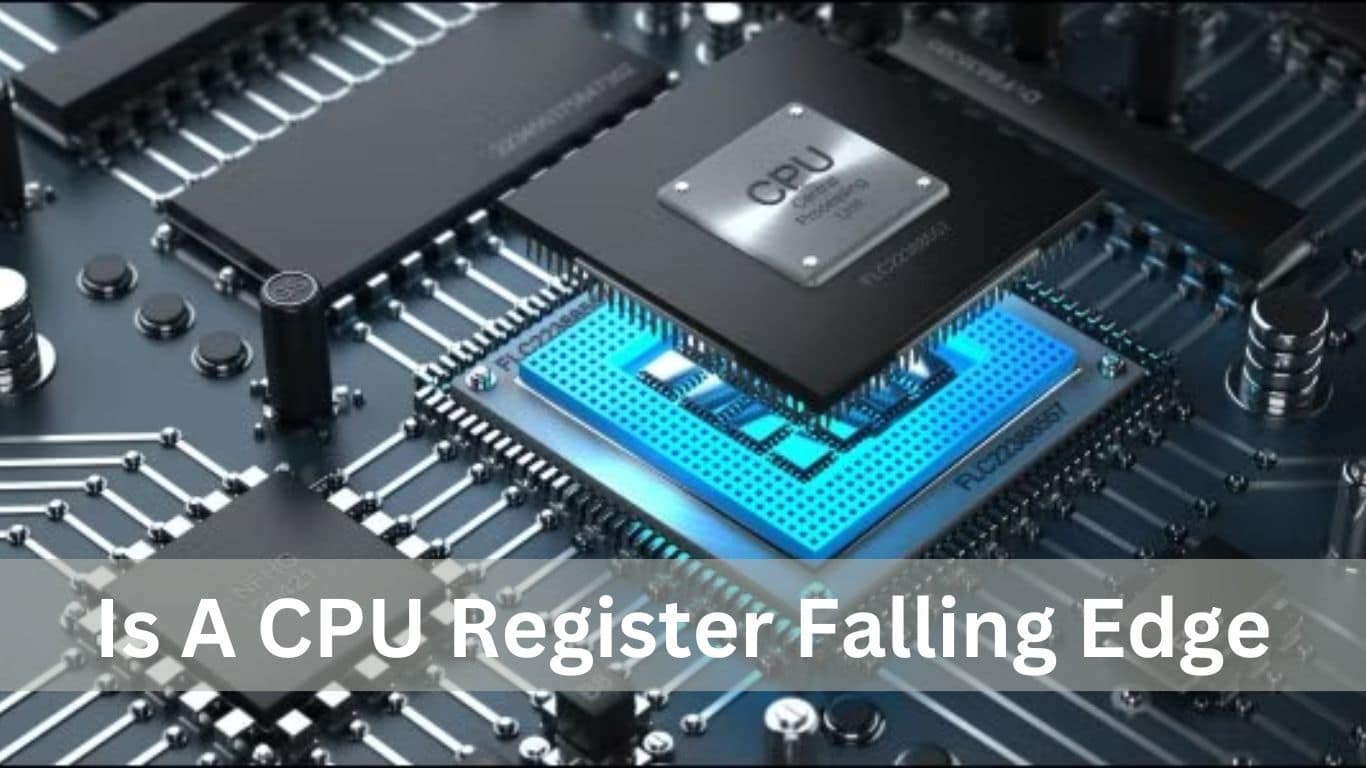When I first learnt about CPUs, the falling edge in a register caught my interest. It’s the moment the signal drops from high to low, triggering key CPU actions. Understanding this helped me appreciate how small details power technology.
Is A CPU Register Falling Edge (short answer)
Yes, a CPU register’s falling edge is when the clock signal drops from high to low, triggering important data transfers or operations within the CPU. This precise moment is crucial for efficient processing.
In this article, we will discuss the concept of a CPU register falling edge. We’ll explore what a falling edge is, how it impacts CPU operations, and why it’s essential for efficient processing.
What Is A CPU Register?
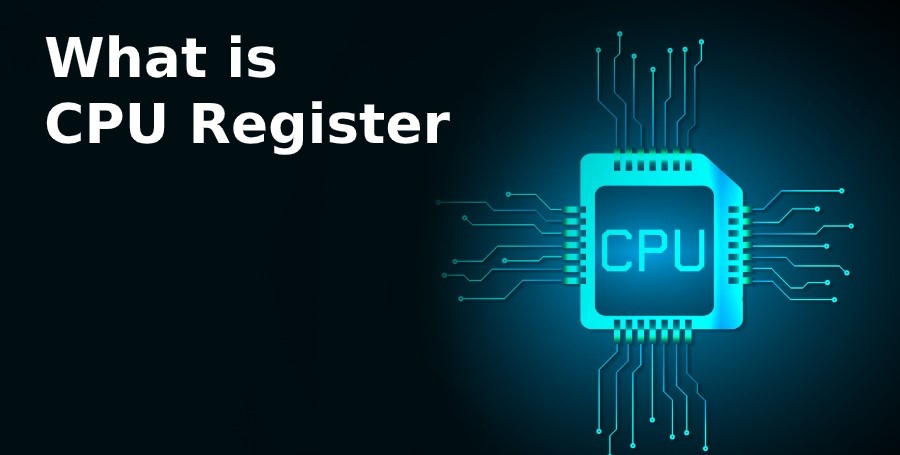
Definition and Functionality
A CPU register is a small, fast storage location within the central processing unit (CPU) of a computer. It is used to quickly store and retrieve data that the CPU needs to execute instructions. Registers are essential for the efficient functioning of the CPU, as they enable quick access to the data that is being processed.
Types of CPU Registers
There are several types of CPU registers, each serving a specific purpose:
- General Purpose Registers: These are used to store temporary data that is being processed by the CPU. They are versatile and can hold data, addresses, or other information needed for operations.
- Special Purpose Registers: These are designed for specific tasks, such as holding the address of the next instruction to be executed or storing the current state of the CPU.
What Is An Edge?
In digital electronics, “edge” refers to the transition point of a signal between two states, typically from low (0) to high (1) or high (1) to low(0). This transition is crucial in timing and synchronisation within circuits.
How do CPU registers work?
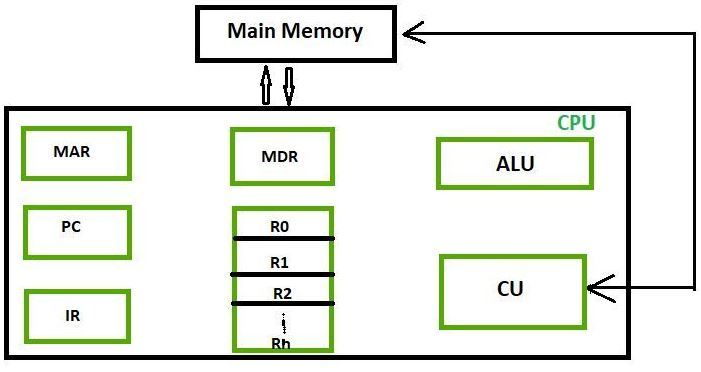
Data storage and retrieval
CPU registers act as temporary holding cells for data that the CPU needs to access quickly. When the CPU processes an instruction, it may need to read data from memory, perform calculations, and then store the result back into a register for further use. This cycle of storage and retrieval is crucial for the CPU’s operation.
Role in CPU Operations
Registers are integral to almost every operation the CPU performs. Whether it’s arithmetic calculations, logical operations, or control flow management, registers provide the necessary speed and efficiency by keeping essential data close to the processing core.
Edge triggering in electronics:
Edge triggering in electronics controls actions in synchronous digital circuits based on clock signal changes. It involves two key clock edges: the rising edge (low to high transition) and the falling edge (high to low transition).
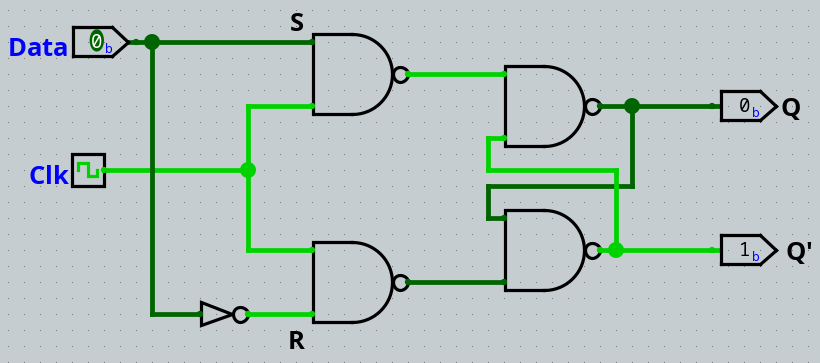
Rising vs Falling Edge
- Rising Edge: The clock signal transitions from low (0) to high (1), triggering actions at this change.
- Falling Edge: The signal shifts from high (1) to low (0), ensuring precise timing and accuracy in synchronous circuits.
The Concept Of Falling Edge:
The concept of a falling edge refers to the transition of a clock signal from a high (1) to a low (0) state. This change is crucial for triggering events or operations in digital circuits, ensuring accurate timing and synchronisation.
1. Falling Edge vs Rising Edge in CPU Operations:
Falling Edge: In CPU operations, this refers to the transition from high (1) to low (0) in the clock signal, often used to trigger specific actions or data transfers.
Rising Edge: This is the transition from low (0) to high (1), commonly used to initiate processes or register updates, aligning with many CPUs’ default triggering mechanisms.
Relationship Between CPU Registers and Edge Triggering:
CPU registers interact with clock signals to store and manage data. Edge triggering, such as falling edge triggering, determines when these registers update or capture data. Timing actions to the falling edge ensures precise synchronisation with the system.
Read Also: How Much CPU Usage For Mac Obs – Complete Details in 2024
Importance of Timing in CPU Register Functions:
Timing is crucial in CPU operations. Registers must update precisely to prevent conflicts and errors. Edge triggering, whether rising or falling edge, ensures orderly and accurate data processing, maintaining the system’s efficiency and reliability.
1. The role of clock signals:
A clock signal acts as the metronome for a CPU, orchestrating the timing of all operations. Every instruction, data transfer, and calculation is synchronised with this signal.

While rising edge triggering is standard, falling edge clocking is also used to reduce power consumption and optimise performance in specific applications, depending on the CPU architecture and system needs.
How The Falling Edge Influences Performance?
The falling edge can enhance CPU performance by optimising timing and power efficiency. Triggering operations on the falling edge reduces system load, leading to more efficient processing and improved performance in high-demand applications.
1. Connection Between Edge Triggering and Power Consumption:
Edge triggering, especially falling edge triggering, can reduce power consumption by minimising operations on the rising edge. This approach is valuable in energy-sensitive applications like mobile devices and embedded systems, enhancing efficiency and battery life.
Falling Edge Triggered CPU Architectures:
Some CPU architectures are tailored to use falling edge triggering, offering advantages in performance and power efficiency. However, they also present challenges in design complexity and timing, requiring careful management to ensure optimal operation.
1. Pros and Cons of Falling Edge Designs:
Pros:
- Improved power efficiency
- Optimised timing for specific operations
- Reduced noise, ideal for low-power and high-performance applications

Cons:
- Increased design complexity
- Potential synchronisation issues
- Limited applicability to certain CPU types
Common Misconceptions About Falling Edge in CPU Registers:
Many believe falling edge triggering is less important than rising edge triggering, but that’s a misconception. The importance of falling edge triggering depends on the system’s specific needs and architecture, making it equally valuable in certain scenarios.
Importance of Synchronisation in Edge Triggering:
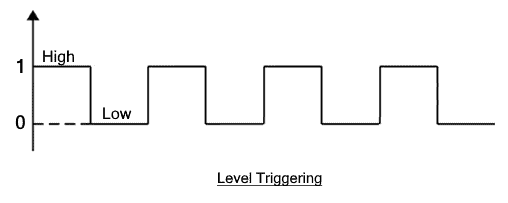
Synchronisation in edge triggering is crucial for ensuring that all operations within a CPU occur at the precise moment needed. Proper synchronisation prevents data corruption, minimises timing errors, and ensures smooth, efficient processing across the system.
Role of Flip-Flops in Edge Triggering:
Flip-flops are vital in digital circuits, capturing and storing data at precise moments in the clock cycle. They are the core components that enable edge triggering in CPU registers, ensuring accurate and synchronised data processing.
Future of Edge Triggering in CPU Design:
As CPU architecture evolves, edge triggering will continue to play a crucial role. Both rising and falling edge triggering will be integral to modern systems, with future advancements likely bringing new optimisations and efficiencies in edge-triggered designs.
Read Also: What Is A Good Idle Percentage CPU – Ultimate Guide 2024
Trends in CPU Architecture: Rising Vs Falling Edge:
The future of CPU architecture may see the rise of hybrid systems that utilise both rising and falling edges. This approach could enhance performance and efficiency, creating more adaptable CPUs capable of handling diverse tasks with greater precision.
Practical Considerations for CPU Engineers:
Engineers must carefully plan, test, and optimise falling edge triggering in CPU designs. While it offers opportunities for efficiency and performance, it also poses challenges that need to be addressed to ensure reliable operation in real-world applications.
Testing and Debugging Falling Edge Timing:
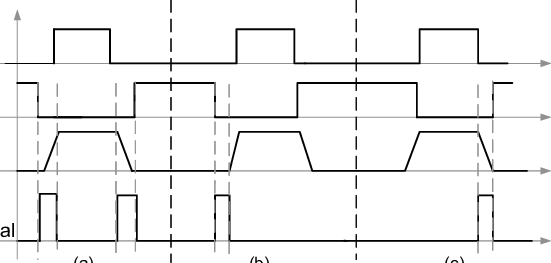
Testing and debugging are essential for edge-triggered systems. Engineers must verify precise timing and ensure the system can handle the demands of falling edge triggering to achieve reliable performance and functionality.
Is A Typical Register Rising Edge Or Falling Edge?
Yes, A typical CPU register is usually triggered by a rising edge, where the clock signal transitions from low to high. However, some operations can also be designed to trigger on the falling edge, depending on the specific architecture and design requirements.
Register Inputs On Rising Edge And Outputs On Falling Edge:
This configuration involves capturing data on the rising edge of the clock signal and then providing outputs on the falling edge. It can optimise performance by separating input capture from output timing, reducing potential conflicts, and improving overall system efficiency.
Is It Necessary To Have “Control Unit Next State Register” To Be Falling Edge Triggered?
No, it is not necessary for the “control unit next state register” to be falling edge triggered. The choice depends on the specific design requirements and architecture of the system.
Read Also: Are Most HP CPU Fan Motors The Same Size? Comprehensive Guide 2024
Does a CPU Use Both Up and Down Voltage Clock Cycles?
Yes, a CPU often uses both rising (up) and falling (down) voltage clock cycles. These transitions are used to trigger different operations and ensure precise timing in various parts of the processor.
CPU Clock Cycle and Instruction Interpretation:
The CPU clock cycle controls instruction execution timing. Each cycle enables the CPU to fetch, decode, and execute instructions, with rising or falling edges triggering these stages for synchronised processing.
FAQ,s
1. What Is The Primary Function Of A CPU Register?
Yes, A CPU register’s main job is to hold data and instructions that the CPU is working on. It helps the CPU quickly access and process this information efficiently.
2. How Does Edge Triggering Affect CPU Registers?
Edge triggering affects CPU registers by determining the exact moment they capture or update data. It ensures data is processed accurately by syncing with specific points in the clock signal.
3. Why Is Falling Edge Timing Significant In CPU Performance?
Falling edge timing is significant in CPU performance because it allows for precise data updates and operations at specific moments. This timing can enhance efficiency and reduce errors by syncing processes accurately.
4. Can Both Rising and Falling Edges Be Used Simultaneously in a CPU?
Yes, both rising and falling edges can be used together in a CPU. This approach helps manage different tasks more efficiently by triggering actions at both high and low points of the clock signal.
5. What Are The Challenges Of Designing Falling Edge-Triggered Cpus?
Designing falling edge-triggered CPUs can be challenging due to increased complexity in timing and synchronization. It requires careful planning to avoid errors and ensure the system works efficiently with the falling edge.
6. Are CPU Registers Flip Flops?
Yes, CPU registers are often built using flip-flops. Flip-flops are electronic components that store and manage data in registers, allowing the CPU to quickly access and process information.
7. Are Registers Edge Triggered?
Yes, many CPU registers are edge-triggered, meaning they update or capture data at specific moments when the clock signal changes, such as on the rising or falling edge.
8. What Is A CPU Register Also Known As?
Yes, a CPU register is also known as a “processor register” or simply a “register.” It’s a small, fast storage location within the CPU used to hold data and instructions temporarily.
9. What Is The Difference Between Rising Edge And Falling Edge?
The difference between a rising edge and a falling edge is:
- Rising Edge: The clock signal changes from low (0) to high (1).
- Falling Edge: The clock signal changes from high (1) to low (0).
- Are CPU registers triggered by the falling edge?
Yes, CPU registers can be triggered by the falling edge, although the rising edge triggers many. The choice depends on the CPU design and specific requirements.
11. Why Would A Designer Use Falling Edge Triggering?
A designer might use falling edge triggering to optimise performance by reducing power consumption, improving timing accuracy, or synchronising with other parts of the system that use falling edge signals.
12. Does the choice of clock edge affect CPU performance?
Yes, the choice of clock edge can affect CPU performance. It influences timing, synchronisation, and power consumption, impacting how efficiently the CPU processes data and handles instructions.
Conclusion:
In summary, the concept of a CPU register falling edge is critical to digital circuit design. Understanding how and why falling edge triggering is used in CPU registers can provide valuable insights into the inner workings of modern processors. Whether you are an engineer designing hardware or a software developer working on optimisation, a solid grasp of this concept is essential.
Also Read:
- How Much CPU Usage For Mac Obs – Complete Details in 2024
- What Is A Good Idle Percentage CPU – Ultimate Guide 2024
- Are Most HP CPU Fan Motors The Same Size? Comprehensive Guide 2024
